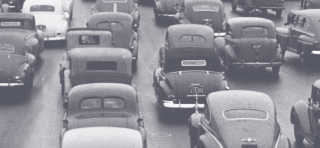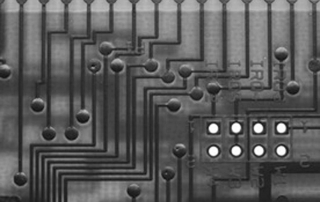What We’ve Learned About Highway Congestion
Pravin Varaiya
There are 26,000 SENSORS buried under the pavements of California freeways. Every thirty seconds, those sensors send data to our computers here in Berkeley. The data tell us about the number of cars driving on that freeway and their speed at that time. We also collect, process, and store data about collisions and other incidents. This database, PeMS (Performance Monitoring System), is now by far the most comprehensive source of information about California highways. Today it stores four trillion bytes of information, which are available online at http://pems.eecs.berkeley.edu. We’ve already learned quite a lot from all those data. For example, we’ve found the error in the old belief that an average speed of 40 to 45 mph maximizes traffic capacity; we now know for a fact that maximum capacity occurs at around 60 mph. And we’ve been surprised to discover that some HOV lanes may have the perverse effect of actually adding to congestion.



